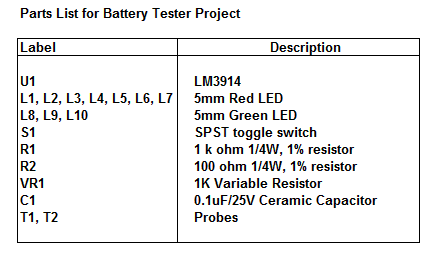.bmp)
This simple automatic emergency light has the following advantages over conventional emergency lights:
1. The charging circuit stops automatically when the battery is fully charged. So you can leave the emergency light connected to AC mains
overnight without any fear.
2. Emergency light automatically turns on when mains fails. So you don’t need a torch to locate it.
3. When mains power is available, emergency light automatically turns
off.
The circuit can be divided into inverter and charger sections. The inverter section is built around timer NE555, while the charger section is
built around 3-terminal adjustable regulator LM317.
In the inverter section, NE555 is wired as an astable multivibrator that produces a 15kHz square wave. Output pin 3 of IC 555 is connected to the Darlington pair formed by transistors SL100 (T1) and 2N3055 (T2) via resistor R4. The Darlington pair drives ferrite transformer X1 to light up the tube light.
For fabricating inverter transformer X1, use two EE ferrite cores (of 25×13×8mm size each) along with plastic former. Wind 10 turns of 22 SWG on primary and 500 turns of 34 SWG wire on secondary using some insulation between the primary and secondary.
To connect the tube light to ferrite transformer X1, first short both terminals of each side of the tube light and then connect to the secondary of X1. (You can also use a Darlington pair of transistors BC547 and 2N6292 for a 6W tube light with the same transformer.)
When mains power is available, reset pin 4 of IC 555 is grounded via transistor T4. Thus, IC1 (NE555) does not produce square wave and emergency light turns off in the presence of mains supply.
When mains fails, transistor T4 does not conduct and reset pin 4 gets positive supply though resistor R3. IC1 (NE555) starts producing square wave and tube light turns on via ferrite transformer X1.
In the charger section, input AC mains is stepped down by transformer X2 to deliver 9V-0- 9V AC at 500 mA. Diodes D1 and D2 rectify the output of the transformer. Capacitors C3 and C4 act as filters to eliminate ripples. The unregulated DC voltage is fed to IC LM317 (IC2). By adjusting preset VR1, the output voltage can be adjusted to deliver the charging voltage.
When the battery gets charged above 6.8V, zener diode ZD1 conducts and regulator IC2 stops delivering the charging voltage.
Assemble the circuit on a general-purpose PCB and enclose in a cabinet with enough space for the battery and switches. Connect a 230V AC power plug to feed charging voltage to the battery and make a 20W tube outlet in the cabinet to switch on the tube light.
.bmp)
.bmp)
.bmp)
.bmp)
.bmp)
.bmp)

.bmp)

.bmp)
.bmp)
.bmp)
.bmp)
.bmp)
.bmp)
.bmp)

.bmp)
.bmp) Assemble the circuit on a generalpurpose PCB and house in a small tinplate enclosure. Fit the system key lock switch (S1) on the front side of the enclosure as shown in Fig. 2. Place RCA sockets (J1 and J2) at appropriate positions. Now, mount the finished unit in place of your existing lock (as shown in Fig. 3) by using suitable clamps and screws.
Assemble the circuit on a generalpurpose PCB and house in a small tinplate enclosure. Fit the system key lock switch (S1) on the front side of the enclosure as shown in Fig. 2. Place RCA sockets (J1 and J2) at appropriate positions. Now, mount the finished unit in place of your existing lock (as shown in Fig. 3) by using suitable clamps and screws.

.bmp)
.bmp)